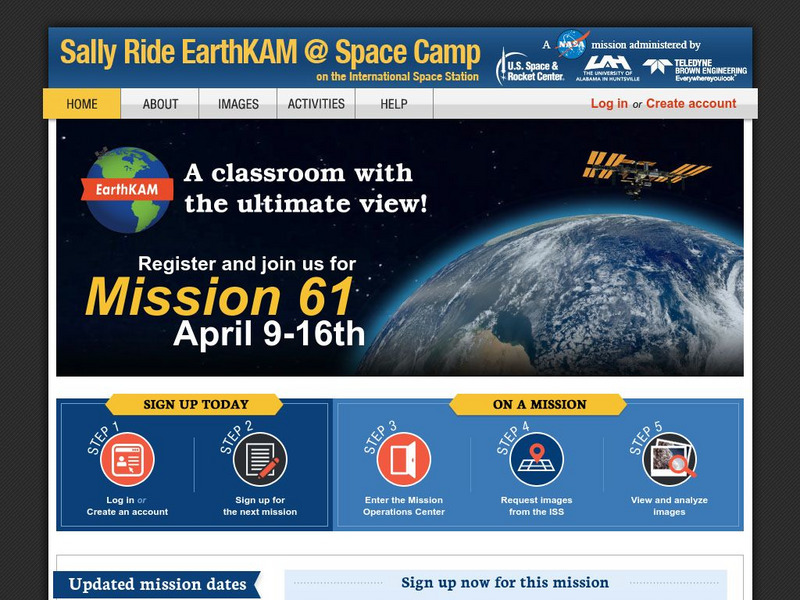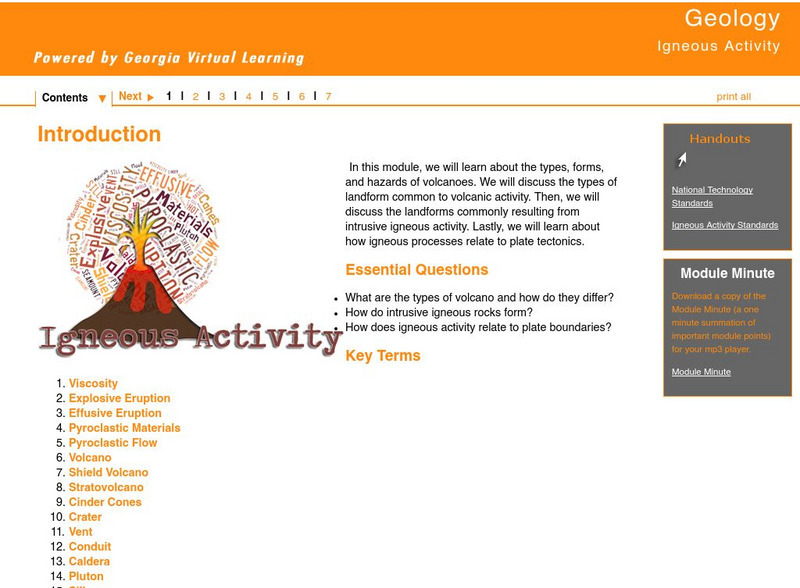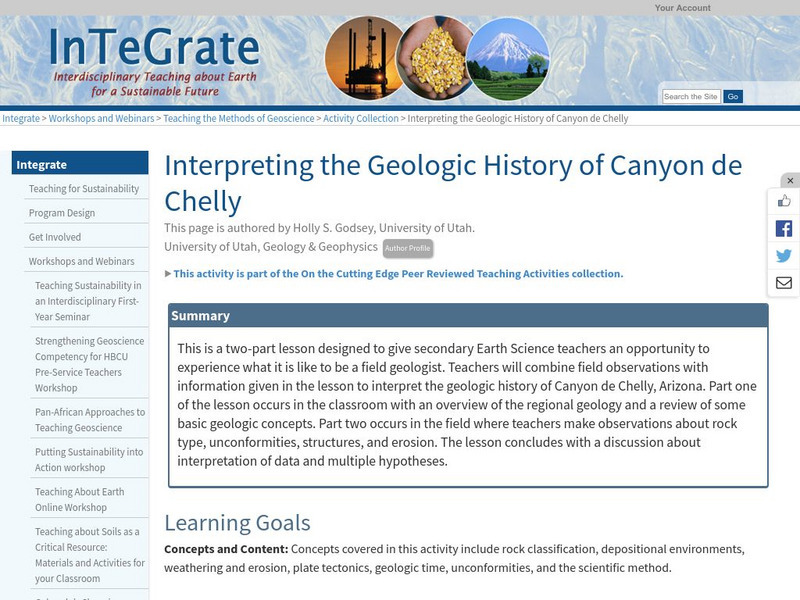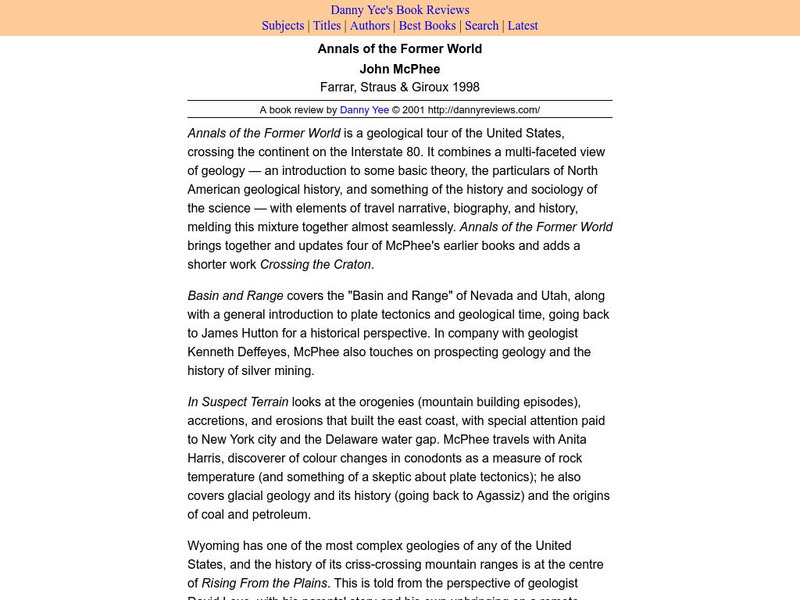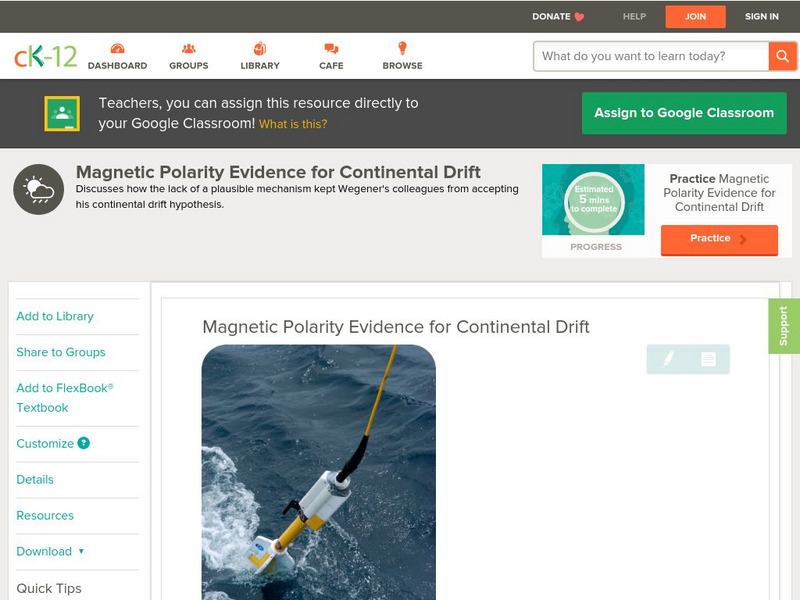Other
Nasa: Iss Earth Kam
Students get a whole new perspective of the world through images obtained from the International Space Station. Students can even request images to be taken through ISS EarthKAM. Activities and educator guides are provided.
Georgia Department of Education
Ga Virtual Learning: Igneous Activity
In this interactive tutorial you will learn about the types, forms, and hazards of volcanoes. The types of landform common to volcanic activity is discussed. Then, the landforms commonly resulting from intrusive igneous activity are...
Curated OER
Extreme Science: A Lesson in Plate Tectonics
With its clickable map, this site provides text and graphics on spreading boundary, converging boundary, subduction zone, transverse boundaries and faults.
Bill Nye
Bill Nye: Move Mountains
This tutorial from Bill Nye uses newspaper to show how tectonic plates can crush together to create mountains.
Science Education Resource Center at Carleton College
Serc: Interpreting the Geologic History of Canyon De Chelly
Earth Science teachers will combine field observations with the information given in the classroom to interpret the geologic history of Canyon de Chelly, Arizona.
Annenberg Foundation
Annenberg Learner: Earth and Space Science: The Geologic Timeline
Take this online quiz and test your knowledge of geological history, and the formation of our atmosphere, water, crust, oxygen, tectonic plates, Moon, and the rest of the Earth.
Science Struck
Science Struck: Facts About the Cenozoic Era and Its Life Forms
Describes the different periods, epochs, and stages of the Cenozoic Era and the events that took place in them. Looks at geology and tectonic plate movements, climate, flora and fauna, and the emergence of mammals as the dominant life...
Science Education Resource Center at Carleton College
Serc: Hotspot Lesson: Mantle Plumes
A lesson that explains a theory on magma generation at hotspots called the mantle plume theory. The goal of this lesson is to introduce students to a theory that scientists are actively trying to prove or refute. Through this, students...
Read Works
Read Works: Cracking Up
[Free Registration/Login Required] This passage shares information about crevices in the earth and earthquakes.This passage is a stand-alone curricular piece that reinforces essential reading skills and strategies and establishes...
Science Struck
Science Struck: How Was the Mid Atlantic Ridge Formed?
Learn what the Mid-Atlantic Ridge is, how it was formed in the Triassic Period, the volcanic activity that takes place there, and the benefits and negative impact of this activity.
Bill Nye
Bill Nye: Move Mountains
Try this at-home science experiment to learn how to make mountains.
PBS
Pbs News Hour Extra: You Don't Need a Seismograph to Study Earthquakes
Three part lesson plan will provide students with information about earthquakes and how to predict them using various Web sites. Activities include historical background on major earthquakes, investigating mechanical waves, and...
Science Struck
Science Struck: Examples of Destructive Forces of Nature
Discusses the destructive forces unleashed by volcanic eruptions, and the movement of water, wind, ice, and tectonic plates.
Science Struck
Science Struck: Examples of Constructive Forces of Nature
Discusses the constructive forces resulting from volcanic eruptions and the movement of water, wind, ice, and tectonic plates.
PBS
Wnet: Thirteen: Savage Earth: Waves of Destruction, a Tsunami Animation
View a brief animation that explains the science behind a tsunami.
Other
Danny Yee's Book Reviews: John Mc Phee
This site provides brief reviews of some of American author John Mcphee's books.
Science Struck
Science Struck: Underwater Volcano Facts
Provides information about underwater volcanoes.
CK-12 Foundation
Ck 12: Magnetic Polarity Evidence for Continental Drift
How magnetic polarity provided more evidence for moving continents.[Free Registration/Login may be required to access all resource tools.]


